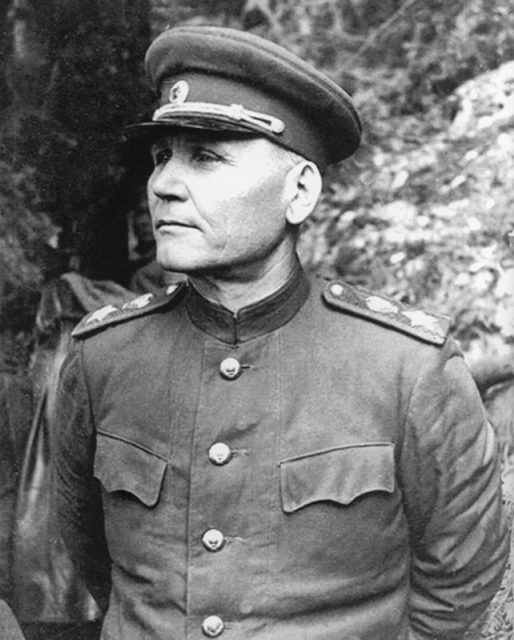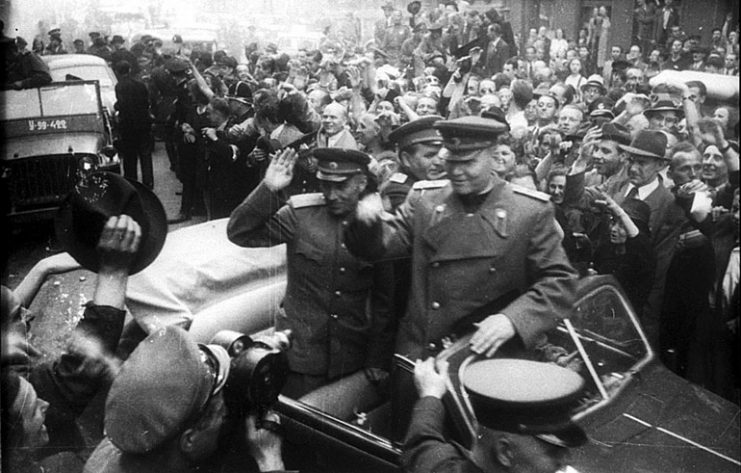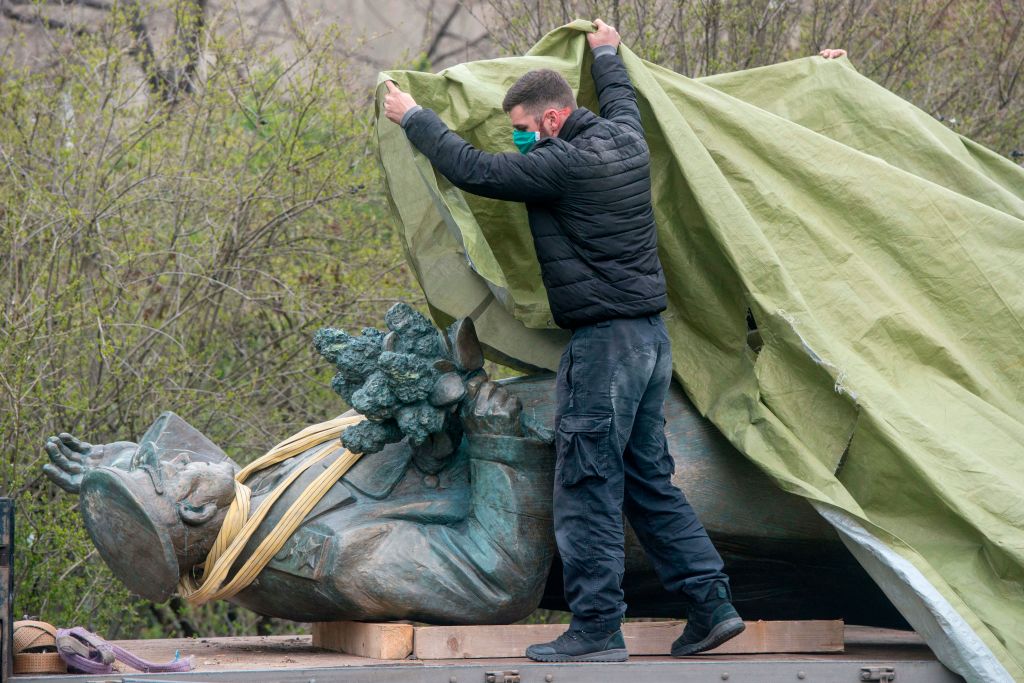The history books tell us that the first tanks that rolled into Berlin city centre on April 21st, 1945.
And that they were commanded by the Russian General Konev, his colleague and long-time rival General Zhukov taking the Reichstag the following day.
Konev went on to liberate the territories of both Prague and Czechoslovakia and was twice awarded the Russian honour of Hero of the Soviet Union in 1944 and 1945.

Despite his distinguished military career up to the end of WWII, his actions during the Soviet administration of the USSR have left some with a somewhat different view of the General.
While he was a key figure in releasing Prague from the grip of the Nazi regime, he was also had a lead role in the suppression of the 1968 ‘Prague Spring’.
As a servant of Moscow Konev had also been a big player in the vicious response to the 1956 Hungarian uprising and the circumstances that led up to the construction of the Berlin wall in 1961.
As such his legacy gets a somewhat mixed response in the now-European Czech Republic.
The statue of the Red Army General was dismantled recently with plans for it to be part of a museum of the 20th century in the capital city.
So far there are no details of when or where this museum is expected to be and so the general remains in storage for the time being.

Local politician from Prague’s District Six, Ondrej Kolar, said of the dismantling that, ‘Konev has been toppled, but Konev will stand again, only in the museum.’
But this has only stirred disagreement and controversy within the Czech Republic and also sent ripples as far as Moscow.
The Czech President Milos Zeman accused Kolar of taking advantage of the current Covid-19 crisis to further a personal ideological agenda, while Vojtech Filip, the Communist Party leader was quoted on Radio Prague saying the removal of the statue was ‘disgraceful’.
From Moscow, Russian Defence Minister Sergey Shoigu has contacted his Czech opposite number, Lubomar Metnar, and stated the Kremlin’s wish that the statue be sent to Russia.
Rather than take the heat out of the argument, the request has further stoked divisions in Prague over whether Konev is hero or villain.
The statue has suffered vandalism in the past with paint being thrown over Konev and once a string of sausages, hung on the General’s arm made the news.

In August 2019 authorities had to clean the anti-Konev slogan, ‘No to the blood-covered marshal, we shall not forget,’ from the monument.
The dismantling of the statue was referred to in similar tones by the Russian Foreign Ministry calling the work carried out by Ondrej Kolar’s local authority an, ‘unfriendly (act of) vandalism by unhinged municipal representatives.’
Seeking to deflect the wrath of the Kremlin the Czech President’s office has said the Republic had no jurisdiction over the statue and that,’if the municipality decides to give it to the Russian authorities, that is up to them.’
This is not an isolated incident and can be seen as part of a trend across many former Eastern Bloc countries removing Soviet era symbols of the regime.
In Russia, where the victory over Nazism was hard fought, the government sees this movement as a marker of ingratitude for the sacrifices made by its population in WWII.
Ivan Konev was born in February 1897 in Lodejno, Podosinvsky and drafted into the army in 1916, fighting in WWI under the Tsar.
After the October Revolution he picked the right side, fighting for the communists through the civil war, rising to corps commissar.
Luck saw him through several Stalinist purges and in WWII he became the first commander to take an army beyond Soviet borders.
In January 1945 he was part of Operation Vistula-Oder, taking Krakow from the Nazis and liberating Auschwitz.
Secret Shrine to Son Killed in WW1 Bricked up for a Century Revealed
After the war he represented the USSR at the funeral of Winston Churchill in 1965 and was himself interred in a place of honour in the Kremlin Wall in Moscow in 1973.
